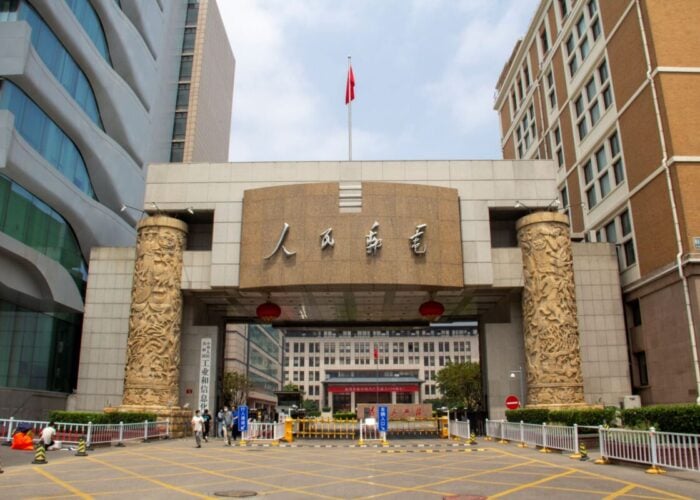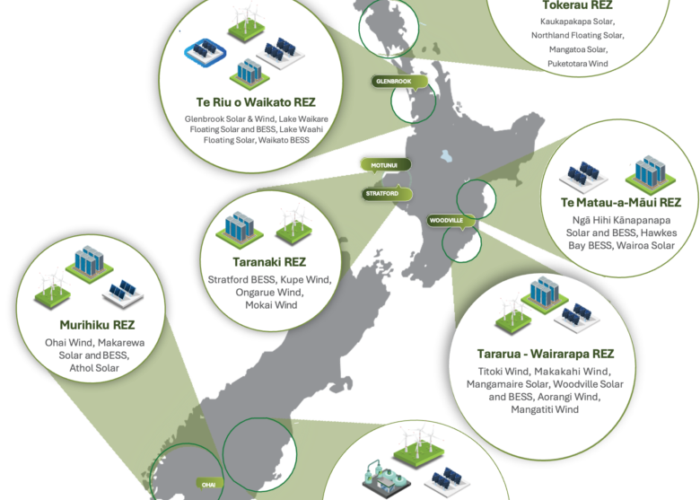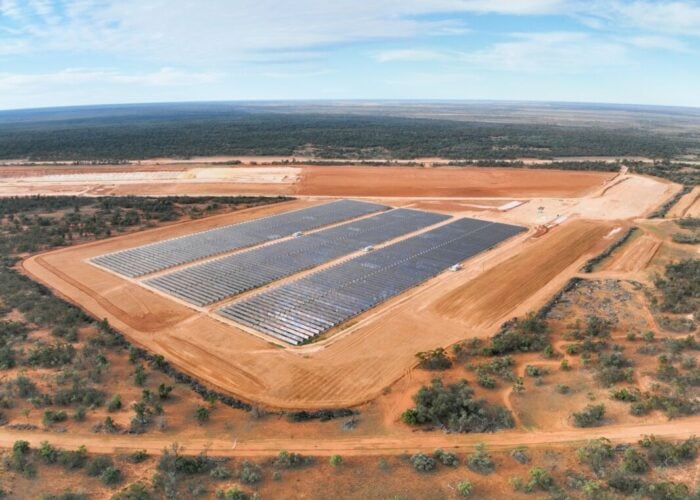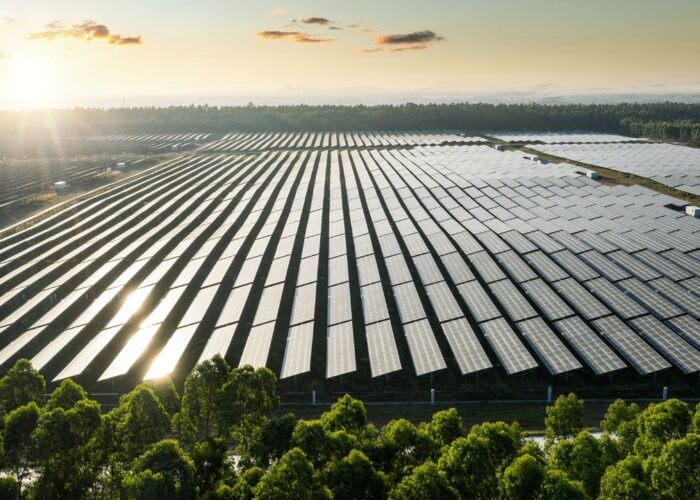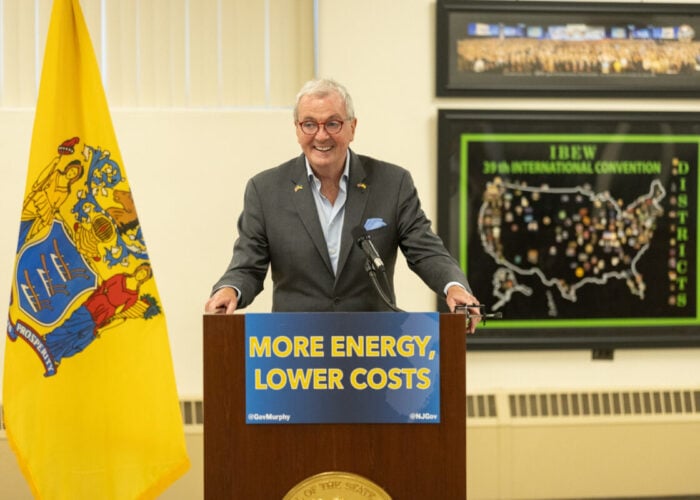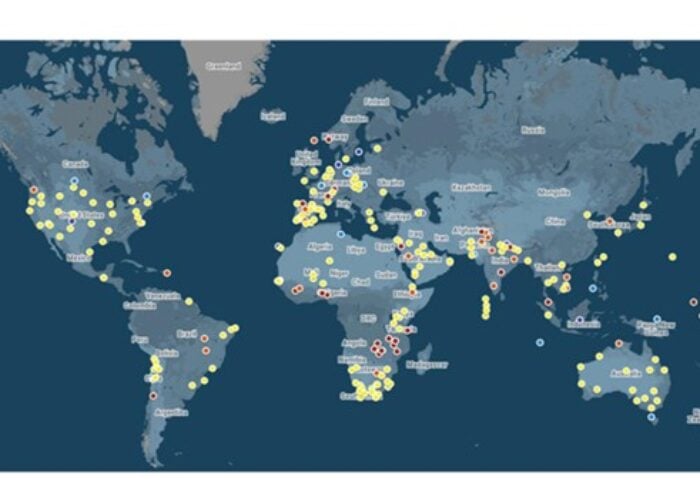Venture capital investors love to use baseball as a metaphor for their wins and losses. The technique to score a home run puts the hitter at risk of being caught out or missing the ball: swinging for the fences is an all-or-nothing strategy.
So it was an irony that the firework show on opening weekend was brought to San Francisco Giants fans not by homegrown solar sponsors, but a Korean industrial giant. The extravagant display must have been visible across the Bay in Oakland, the home of BrightSource, which last week cancelled its initial public offering at the last minute.
Unlock unlimited access for 12 whole months of distinctive global analysis
Photovoltaics International is now included.
- Regular insight and analysis of the industry’s biggest developments
- In-depth interviews with the industry’s leading figures
- Unlimited digital access to the PV Tech Power journal catalogue
- Unlimited digital access to the Photovoltaics International journal catalogue
- Access to more than 1,000 technical papers
- Discounts on Solar Media’s portfolio of events, in-person and virtual
BrightSource executives would no doubt appreciate the paternal financial support through its growing pains of a parent company with Hanwha Corporation's market capitalization of $83bn. Hanwha SolarOne is already listed on Nasdaq and has large US ambitions, even though it barely trades above penny stocks. Meanwhile, the Californian solar thermal company touches a market cap of around $1bn and abandoned plans to shake its tin for $183 million as public appetites for its stock appeared low.
After the bankruptcies of Solyndra and Evergreen Solar in the US and Q-Cells in Germany, the solar industry had been looking forward to BrightSource successfully opening its stock for trade on the public market.
BrightSource's decision to withdraw from the IPO was based on market conditions after the Dow Jones fell 2.4%, solar stocks fell dramatically and Enphase Energy priced at 46% below its target, said a spokesman.
“Conditions deteriorated as we were on the road and we didn't want to devalue what we were doing. We made this decision from a position of strength. We are in a strong financial position, have support from world-class investors and partners and one of the largest solar pipelines in the US,” he said.
The company is on track to deliver 2.3GW of contracts with Pacific Gas & Electric Company and Southern California Edison, including the 392MW Ivanpah project.
But the stakes are high for BrightSource and parallels with Solyndra – which withdrew its IPO just over a year before it filed for bankruptcy – are impossible to ignore.
A BrightSource collapse would potentially be an even bigger disaster than Solyndra as the Department of Energy's loans programme awarded $1.6 billion of the $2 billion costs for the Ivanpah project.
But government loans awarded to a technology manufacturer and project development are very different, the BrightSource spokesman said.
“Unlike Solyndra, the DoE loan for Ivanpah is for a project which has long-term contracts from utilities to purchase electric power for 20+ years. This is like building a new hotel with the assurance that it will have 100% occupancy from the day it opens. Solyndra's loan was for a technology-specific manufacturing facility with the hope that demand would follow. When demand did not follow, the manufacturing facility proved to be an underutilized corporate asset.”
He added that risks were reduced by the way the project finance is structured, which means that the majority owners are NRG and Google, with BrightSource as a 14% minority owner and a technology supplier.
“Instead of a loan being provided to a single company, the loan at Ivanpah is provided to the actual project owners,” he said. “BrightSource Energy initiated the DoE loan application in 2006, but a separate legal entity, Solar Partners, is responsible for the project’s success.”
BrightSource has also raised more than $530 million in financing from DBL Investors, Chevron, Alstom and leading Silicon Valley venture firm, VantagePoint Capital.
VantagePoint is currently in fundraising mode and lists a number of solar plays in its cleantech portfolio in addition to BrightSource: MiaSolé, SolarCentury and 1366.
MiaSolé could be more likely to be acquired than go public; SolarCentury could struggle to reach vast levels of installed capacity in the UK and 1366's direct wafer technology has yet to reach commercial production. Out of all VantagePoint's rising solar stars, BrightSource appeared the most likely to replicate the “home run” the VC firm had with the Tesla exit in 2010.
Since then, the cleantech IPO drought has grown more extreme, except for biofuels companies such as Solazyme, Amyris and Gevo.
Last month, Enphase Energy finally broke the drought. The Californian microinverter company's share price only reached half of its target, which still returned a modest $37.7m for at least one of its investors, Kleiner Perkins Caufield & Byers.
Hopes were high for BrightSource and a successful IPO would have been a significant boost for the broader solar industry.
At last month's Cleantech Forum in San Francisco, Dan Adler, the president of CalCEF, an evergreen fund of funds, said that a successful BrightSource IPO would have been a welcome counterpoint to Solyndra and indicate that the industry is “exiting a period of stasis”.
CalCEF was established with a $30m settlement from Pacific Gas & Electric after California's energy crisis and the BrightSource public offering would have marked its second exit (out of 40 investments) through VantagePoint Capital.
“Hopefully, it validates the notion that government doesn't pick winners – it creates market opportunities and the market yields winners and losers,” he said.
Adler was far from alone in thinking that BrightSource could break the drought. But after early hopes in the first quarter, 2012 is unlikely to be a dambuster year for solar technology IPOs and investors are nursing bruised egos this week rather than a champagne hangover.
Last September, long before the BrightSource IPO withdrawal, Alan Salzman, the outspoken and optimistic founder of VantagePoint, told me what the attraction had been for investors in solar.
“Solar is now a substantial industry and it’s going to be a gigantic industry,” he said. “But solar is not one thing. BrightSource and MiaSolé are both radically different technologies and applications. Even within PV we have to make sure we see the full food chain – like iPhones being different from the apps…”
But Salzman, whose megawatt smile alone could light the San Francisco Bay Bridge, admitted solar investors may have been blinded by the sun when oil prices spiked in 2008 to $145 a barrel.
“We had a short-lived bubble of enthusiasm. Solar got over funded… [and] everyone was projecting oil at $200 a barrel at that point. Things became economical that weren’t before. You had a lot of people newly arrived to the space and the most obvious thing to do was a solar PV effort.
“Investing in new companies is hard with a significant failure rate. There’s a surplus of manufacturers of modules globally and in the US that is not sustainable. It follows a path of many other industries before it.
“The mistake in the public view and sometimes in the political leaders' view is that there’s something wrong with PV. In fact, it’s performing brilliantly.
“Prices have been crashing as you’d want them to, just as they did in the semiconductor world. It’s why our computers get cheaper and better and it’s a good thing.”
“But in our capitalist, Darwinian world, it leaves casualties.”
It's too early to tell whether BrightSource will be another Darwinian casualty of crashing PV prices and there may be few warning signs before it happens – senior staff at Solyndra were reportedly still signing purchase orders the night before the company folded.
Solar still continues to attract investment, although with a dramatically changed profile from early stage funding for “disruptive innovation” to downstream installation and financing.
In the last quarter, solar attracted $249m in venture capital, although $81m of that went to SolarCity in a funding round led by Silver Lake, a new fund which specializes in growth stage investments.
Silver Lake's deal illustrates a trend: investors are heading downstream to project development, installation and financing for their solar returns. US Bancorp, Google, Bank of America and Rabobank have also lined up with SolarCity to provide financing for residential solar installations.
While VC interest in disruptive technology in solar has not ground to a halt, it has certainly slowed, Paul Straub, director at Claremont Creek Ventures in Oakland, said last month.
“In terms of investing in new generation materials, solar is going to experience a lull in investment. But there's a lot balance of systems opportunities – power electronics companies are growing quite nicely as well as companies in installation and financing.”
SolarCity, SunRun and Clean Power Finance are rumoured to file to go public this year as project-based venture-backed startups like BrightSource lose their lustre, he added.
“BrightSource will have to deal with plummeting prices on PV. Also, BrightSource is going out and building individual projects, which is a model they've been able to pull off. But going forward, more opportunities will look like Enphase Energy power electronics companies.”
Consolidation in the solar industry is already happening with further to go and a retreat to conservative PV business models might be the next phase.
But although this might be the end of the solar startup as we've known it so far, it's not necessarily the end of innovation.
Where innovation takes, places might shift from the classic VC model which expects quick returns as it did from nimble startups in the internet, mobile gaming and social networking sectors. VCs appear to have woken up to the fact that their winning strategy of swinging for the fences just might not cut it in the solar industry.
Entrepreneurs and scientists in solar are perhaps likely to pitch more often to strategic corporate investors than VCs in future as R&D labs within incumbent energy companies increasingly focus on innovation.
Innovation in the wind industry – a long-time cold sector for the VC community – already largely works in this way where R&D divisions in established companies such as GE, Vestas or Gamesa drive much of the advances in technology.
Although the venture coaches may be leaving the field, talent will play on, albeit for potentially more established teams. This isn't necessarily bad: where would the solar world be without Bell Labs, for example? But like all good parents, the brightest upstarts should be given their time in the sun, even if it means disruption to business as usual, and tough love meted out at the appropriate level to let the winners flourish and the losers fail fast.

